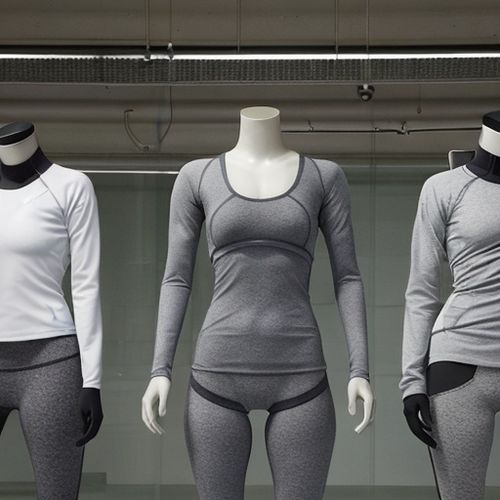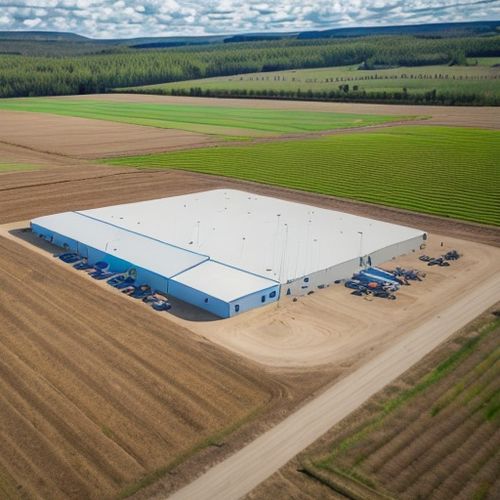The Canadian athletic apparel giant Lululemon has built an intellectual property fortress around its technical fabrics and garment engineering, transforming yoga wear into a patent-protected technology platform. Beyond its recognizable brand aesthetic, the company's 487 active patents worldwide reveal a systematic approach to owning the future of performance apparel through material science and biomechanical innovation.
Fabric Chemistry Dominance
Lululemon's patent portfolio shows particular depth in polymer modifications and textile treatments. Their signature Luon fabric, protected by 23 interlocking patents, combines spandex cross-linking techniques with moisture-wicking topography that outperforms conventional blends in laboratory abrasion tests. More recent filings indicate breakthroughs in self-adjusting compression—garments that adapt their tension through body temperature-responsive yarns. This goes beyond typical activewear claims to border on biomedical device territory, with patents explicitly mentioning applications for circulatory conditions.
Seam Engineering Innovations
The company has rethought apparel construction from first principles, with 76 patents covering stitch-free joining methods. Their proprietary ultrasonic welding techniques create bonds stronger than the fabric itself while eliminating chafing points—a key differentiator in high-friction areas like sports bras. Recent filings describe 3D-knitted whole garments with strategically varied elasticity, moving beyond panel-based construction. These aren't incremental improvements but fundamental reimagining of how athletic apparel functions on moving bodies.
Biomechanical Research Integration
Lululemon's patent applications increasingly read like kinesiology studies, reflecting deep investment in human movement science. One notable patent family covers motion-capture-derived stitch patterns that align with muscle activation sequences in yoga flows. Another protects algorithms that convert athlete performance data into gradient compression maps—essentially engineering apparel to match how hard specific body parts work during different activities. This research-driven approach creates patent claims too specific for competitors to easily design around.
Thermoregulation Technologies
The company is staking claim to next-generation temperature management with phase-change material patents that go beyond basic moisture-wicking. One groundbreaking filing describes microencapsulated wax particles woven into fabric that absorb excess heat during activity then release it during cool-down—a technology originally developed for NASA and adapted for studio-to-street wear. Separate intellectual property covers biodegradable cooling filaments that activate at precise humidity levels, addressing the common problem of overcooling during intermittent activity.
Sustainability Patent Paradox
While promoting eco-conscious initiatives, Lululemon's patent strategy reveals tensions between performance and sustainability. Their plant-based nylon alternatives (protected by 14 patents) actually incorporate petroleum-derived stabilizers to meet durability standards—a fact absent from marketing materials. Conversely, patents for fully compostable elastic fibers exist in the portfolio but haven't reached commercial scale, suggesting technical or cost barriers. The company appears to be patenting both conventional high-performance solutions and their green alternatives, hedging their technological bets.
Manufacturing Process IP
Unusually for an apparel brand, 18% of Lululemon's patents cover production equipment rather than end products. These include laser-cutting systems that simultaneously seal fabric edges, and robotic sewing cells that adjust tension dynamically based on fabric feed. Such patents create formidable barriers to imitation—even if competitors decode fabric compositions, replicating the manufacturing precision proves difficult without infringing on protected methods.
Digital Integration Frontiers
Recent filings signal a push into smart apparel, with patents covering conductive embroidery that functions as both aesthetic design and biometric sensor array. One particularly ambitious application describes machine-washable flexible batteries woven into waistbands to power muscle stimulation panels. While some tech giants focus on rigid wearable devices, Lululemon's patents suggest a vision where the entire garment becomes an interactive surface—without compromising stretch or comfort.
Strategic Gaps
Analysis reveals intentional white spaces in their IP strategy. Lululemon holds surprisingly few patents in men's specific patterning, despite that market segment's growth. Similarly, their footwear patent portfolio remains embryonic compared to apparel, suggesting either delayed ambitions or different protection strategies for upcoming launches in that category.
Global Patent Tactics
The company tailors filings by jurisdiction—emphasizing fabric patents in China where imitation risk is high, while focusing on manufacturing processes in German and Japanese filings where precision engineering matters most. Their U.S. filings increasingly include method-of-use claims (e.g., "a system for enhancing yoga practice through gradient compression"), creating additional enforcement avenues against copycats.
Litigation Posture
Unlike some tech firms that aggressively sue competitors, Lululemon selectively enforces its patents mainly against direct knockoffs. This restrained approach may reflect the challenges of apparel patent litigation—where design changes can often circumvent utility claims. However, their 2023 lawsuit against Peloton showed newfound willingness to defend technical IP beyond simple fabric copying.
Future Trajectory
Patent applications published in 2024 reveal three emerging focus areas: self-deodorizing textiles using embedded probiotics, impact-absorbing materials for trail sports, and machine-learning-designed knit patterns that optimize breathability across body zones. This pipeline suggests Lululemon aims to own not just better athletic wear, but the science of how clothing interacts with human performance at molecular and biomechanical levels.
Lululemon's patent portfolio unveils a long-game strategy far beyond athleisure trends—it's methodically building an unassailable position at the intersection of textile science, human physiology, and advanced manufacturing. While competitors chase fashion cycles, the Canadian company is patenting fundamental building blocks of how performance apparel will function decades from now. Their true innovation lies not in any single technology, but in creating an interlocking web of intellectual property that makes complete market entry barriers for would-be rivals. As activewear evolves from clothing to biomechanical interface, Lululemon's technical patents position it as both apparel company and technology licensor—a dual role that could redefine the industry's competitive landscape.

By William Miller/Mar 31, 2025

By Rebecca Stewart/Mar 31, 2025

By Natalie Campbell/Mar 31, 2025

By Olivia Reed/Mar 31, 2025

By Amanda Phillips/Mar 31, 2025

By Michael Brown/Mar 31, 2025

By Lily Simpson/Mar 31, 2025

By Natalie Campbell/Mar 31, 2025

By Christopher Harris/Mar 31, 2025

By Eric Ward/Mar 31, 2025

By Daniel Scott/Mar 30, 2025

By Thomas Roberts/Mar 30, 2025

By Natalie Campbell/Mar 30, 2025

By Rebecca Stewart/Mar 30, 2025

By James Moore/Mar 30, 2025

By Benjamin Evans/Mar 30, 2025

By Michael Brown/Mar 30, 2025

By John Smith/Mar 30, 2025

By John Smith/Mar 30, 2025

By Victoria Gonzalez/Mar 30, 2025